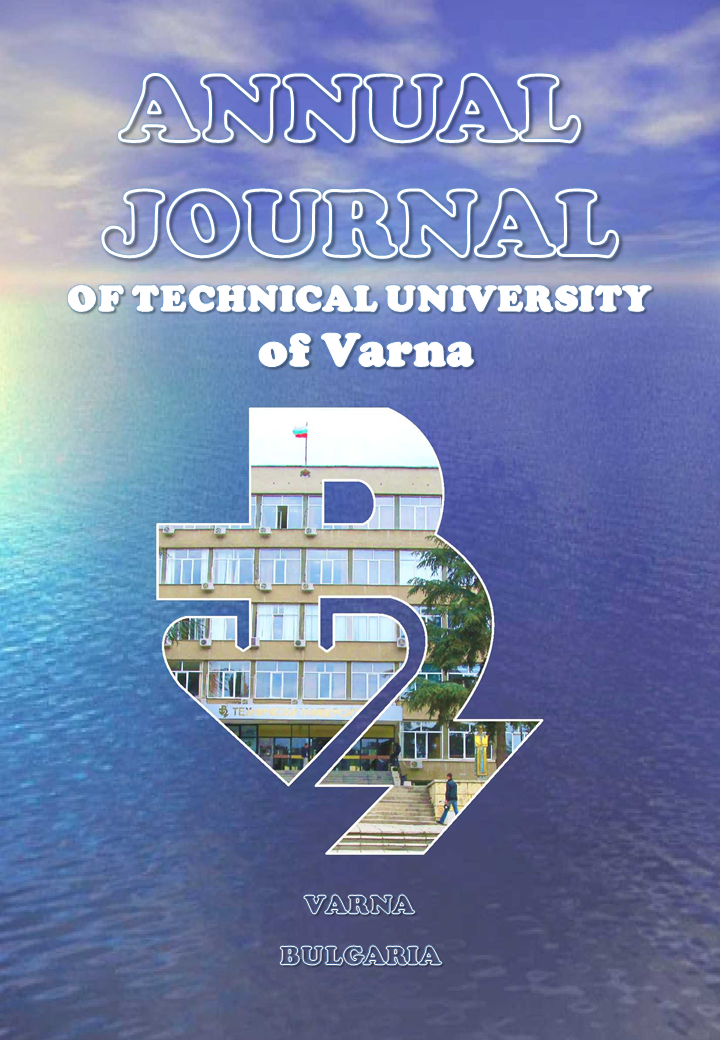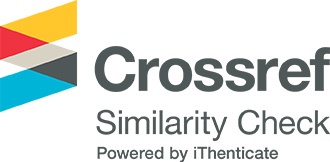Genetic algorithm-based multi-objective optimization model for software bugs prediction
##semicolon##
https://doi.org/10.29114/ajtuv.vol6.iss1.245##semicolon##
OptimizationАбстракт
The accuracy and reliability of software are critical factors for consideration in the operation of any electronic or computing device. Although, there exist several conventional methods of software bugs prediction which depend solely on static code metrics without syntactic structures or semantic information of programs which are more appropriate for developing accurate predictive models. In this paper, software bugs are predicted using a Genetic Algorithm (GA)-based multi-objective optimization model implemented in MATLAB on the National Aeronautics and Space Administration (NASA) dataset comprising thirty-eight distinct factors reduced to six (6) major factors via the use of the Principal Component Analysis (PCA) algorithm with SPSS, after which a linear regression equation was derived. The developed GA- based multi-objective optimization model was well-tried and tested. The accuracy and sensitivity level were also analyzed for successful bug detection. The results for optimal values ranging from 95% to 97% were recorded at an average accuracy of 96.4% derived through MATLAB-implemented measures of critical similarities. The research findings reveal that the model hereto proposed will provide an effective solution to the problem of predicting buggy software in general circulation.
Изтегляния
##submission.citations##
<p style="text-align: justify;">Bavisi, S., Mehta, J., & Lopes, L. (2014). A comparative study of different data mining algorithms. <em>International Journal of Current Engineering and Technology</em>, <em>4</em>(5), 3248-3252.</p>
<p style="text-align: justify;">Catal C., Diri, B. (2009). A systematic review of software fault prediction studies. <em>Expert Systems with Applications, 36</em> (4), 7346–7354. <br/><a href="https://doi.org/10.1016/j.eswa.2008.10.027" target="_blank">Crossref</a></p>
<p style="text-align: justify;">Cha, S. H., & Tappert, C. C. (2009). A genetic algorithm for constructing compact binary decision trees. <em>Journal of pattern recognition research</em>, <em>4</em>(1), 1-13. <br/> <a href="https://doi.org/10.13176/11.44"target="_blank">Crossref</a></p>
<p style="text-align: justify;">Challagulla, V. U. B., Bastani, F. B., Yen, I. L., & Paul, R. A. (2008). Empirical assessment of machine learning based software defect prediction techniques. <em>International Journal on Artificial Intelligence Tools</em>, <em>17</em>(02), 389-400.<br/> <a href="https://doi.org/10.1142/S0218213008003947" target="_blank">Crossref</a></p>
<p style="text-align: justify;">Chen, T., & Guestrin, C. (2016). Xgboost: A scalable tree boosting system. <em>Proceedings of the 22nd ACM SIGKDD, International conference on knowledge discovery and data mining</em>, (22), 785-794. <br/><a href="https://doi.org/10.1145/2939672.2939785"target="_blank">Crossref</a></p>
<p style="text-align: justify;">Costa, E. O., de Souza, G. A., Pozo, A. T. R., & Vergilio S. R. (2007). Exploring Genetic Programming and Boosting Techniques to Model Software Reliability. <em>IEEE Transactions on Reliability, (</em>56): 422-434. <br/><a href="https://doi.org/10.1109/TR.2007.903269"target="_blank">Crossref</a></p>
<p style="text-align: justify;">Doval, D., Mancoridis, S. & Mitchell, B. S. (1999). Automatic clustering of software systems using a genetic algorithm. <em>Proc. Conference of Software Technology and Engineering Practice</em>, England, 73-81. <br/><a href="https://doi.org/10.1109/STEP.1999.798481"target="_blank">Crossref</a></p>
<p style="text-align: justify;">Gupta, Dharmendra, L. & Kavita S. (2017). Software bug prediction using object-oriented metrics. <em>Sādhanā (1), </em>1-15.</p>
<p style="text-align: justify;">Haznedar, B. & Kalinli, A. (2016). Training ANFIS Using Genetic Algorithm for Dynamic Systems Identification. <em>Int j Intell Sys appl eng</em>, <em>4</em>(1), 44-47.<br/> <a href="https://doi.org/10.18201/ijisae.266053"target="_blank">Crossref</a></p>
<p style="text-align: justify;">Jaspree, K. (2011). A k-means Based Approach for Prediction of Level of Severity of Faults in Software System. In <em>Proceedings of International conference on Intelligent Computational Systems</em>.</p>
<p style="text-align: justify;">Jureczko, M., & Spinellis, D. (2010). Using object-oriented design metrics to predict software defects. <em>Models and Methods of System Dependability. Oficyna Wydawnicza Politechniki Wrocławskiej</em>, 69-81.</p>
<p style="text-align: justify;">Kim, S., Zhang, H., Wu, R. and Gong, L. (2011). Dealing with noise in defect prediction. <em>Proceeding of the 33rd International Conference on Software Engineering, ICSE</em> (11), 481–490.<br/> <a href="https://doi.org/10.1145/1985793.1985859"target="_blank">Crossref</a></p>
<p style="text-align: justify;">Malhotra, R. & Singh, Y. (2011). On the applicability of machine learning techniques for object-oriented software fault prediction. <em>Software Engineering: An International Journal 1</em>(1), 24-37.</p>
<p style="text-align: justify;">Naidu, M. S., & Geethanjali, N. (2013). Classification of defects in software using decision tree algorithm. <em>International Journal of Engineering Science and Technology</em>, <em>5</em>(6), 1332-1342.</p>
<p style="text-align: justify;">Okutan, A., & Yıldız, O. T. (2014). Software defect prediction using Bayesian networks. <em>Empirical Software Engineering 19</em>(1),154-181. <br/><a href="https://doi.org/10.1007/s10664-012-9218-8"target="_blank">Crossref</a></p>
<p style="text-align: justify;">Peng, Y., Kou, G., Wang, G., Wu, W., & Shi, Y. (2011). Ensemble of software defect predictors: an AHP-based evaluation method. <em>International Journal of Information Technology & Decision Making</em>, <em>10</em>(01), 187-206. <br/> <a href="https://doi.org/10.1142/S0219622011004282"target="_blank">Crossref</a></p>
<p style="text-align: justify;">Rahman, F., Posnett, D. & Devanbu, P. (2012). Recalling the imprecision of cross-project defect prediction. <em>In Proceedings of the ACM SIGSOFT 20th International Symposium on the Foundations of Software Engineering, (12)</em> 1–61:11 New York, NY, USA. ACM. <br/><a href="https://doi.org/10.1145/2393596.2393669"target="_blank">Crossref</a></p>
<p style="text-align: justify;">Sharma, D. & Chandra, P. (2018) Software Fault Prediction Using Machine Learning Techniques<em>.</em> In <em>Smart Computing and Informatics </em>(pp.541-549). Springer, Singapore. <br/><a href="https://doi.org/10.1007/978-981-10-5547-8_56"target="_blank">Crossref</a></p>
<p style="text-align: justify;">Shepperd, M., Bowes, D. & Hall, T. (2014). Researcher bias: The use of machine learning in software defect prediction. <em>IEEE Transactions on Software Engineering</em>, <em>40</em>(6), 603-616. <br/><a href="https://doi.org/10.1109/TSE.2014.2322358"target="_blank">Crossref</a></p>
<p style="text-align: justify;">Shivaji, S., Whitehead, E. J., Akella, R. & Kim, S. (2012). Reducing features to improve code change-based bug prediction. <em>IEEE Transactions on Software Engineering</em>, <em>39</em>(4), 552-569.<br/> <a href="https://doi.org/10.1109/TSE.2012.43"target="_blank">Crossref</a></p>
<p style="text-align: justify;">Singh, P. & Chug, A. (2017). Software defect prediction analysis using machine learning algorithms. In <em>7th International Conference on Cloud Computing, Data Science & Engineering Confluence</em>, 212-232. IEEE. <br/><a href="https://doi.org/10.1109/CONFLUENCE.2017.7943255"target="_blank">Crossref</a></p>
<p style="text-align: justify;">Suman, B. (2004). Study of simulated annealing-based algorithms for multi-objective optimization of a constrained problem<em>. Comput. Chem. Eng. 28</em>(9) 1849–1871. <br/><a href="https://doi.org/10.1016/j.compchemeng.2004.02.037"target="_blank">Crossref</a></p>
<p style="text-align: justify;">Yamaguchi, F., Lottmann, M. & Rieck, K. (2012). Generalized vulnerability extrapolation using abstract syntax trees. In <em>Proceedings of the 28th Annual Computer Security Applications Conference</em>, ACM, (pp.359–368), Orlando, FL, USA. <br/><a href="https://doi.org/10.1145/2420950.2421003"target="_blank">Crossref</a></p>
<p style="text-align: justify;">Zavala, G. R., Nebro, A. J., Luna, F., & Coello Coello, C. A. (2014). A survey of multi-objective metaheuristics applied to structural optimization. <em>Structural and Multidisciplinary Optimization</em>, <em>49</em>(4), 537-558.<br/> <a href="https://doi.org/10.1007/s00158-013-0996-4"target="_blank">Crossref</a></p>
<p style="text-align: justify;">Zhou, Y., Yang, Y., Lu, H., Chen, L., Li, Y., Zhao, Y., ... & Xu, B. (2018). How far we have progressed in the journey? an examination of cross-project defect prediction. <em>ACM Transactions on Software Engineering and Methodology (TOSEM)</em>, <em>27</em>(1), 1-51. <br/><a href="https://doi.org/10.1145/3183339"target="_blank">Crossref</a></p>
##submission.downloads##
Публикуван
##submission.howToCite##
Брой
Раздел (Секция)
##submission.license##
СПОРАЗУМЕНИЕ ЗА ПУБЛИКУВАНЕ
Годишника на Технически университет - Варна (ГТУВ) цели да гарантира, че постъпващите статии се публикуват, като същевременно се предоставя значителна свобода на публикуващите ги автори. За изпълнение на тази цел, ГТУВ поддържа гъвкава политика относно авторските права, което означава, че няма прехвърляне на авторски права от автора на издателя, а авторите запазват изключително авторско право върху интелектуалното си произведение.
При изпращане на статия, Отговорния автор трябва да се съгласи и приеме правилата и условията за публикуване, изложени в настоящото Споразумение за публикуване, които са както следва:
ПРЕДОСТАВЯНЕ НА ПРАВА ОТ ОТГОВОРНИЯ АВТОР
Отговорния автор предоставя на ГТУВ за времето на пълния срок на авторското право и всяко следващо удължаване или подновяване, следното:
• Неотменимо, неизключително право да публикува, възпроизвежда, предоставя, разпространява или по друг начин използва предоставената работа в електронни и печатни издания и в производни произведения в целия свят, на всички езици и във всички известни съществуващи или в последствие възникнали медии.
• Неотменимо, неизключително право да създава и съхранява електронни архивни копия на работата, включително правото да депозира предоставената работа в дигитални хранилища с отворен достъп.
• Неотменимо, неизключително право на лицензиране на други лица да възпроизвеждат, превеждат, преиздават, предоставят и разпространяват предоставената работа при условие, че авторите са надлежно идентифицирани (за момента това се извършва чрез публикуване на произведението под лиценз Creative Commons Attribution 4.0 Unported).
С предоставянето на работата за публикуване, авторските права върху материала остават на авторите. Авторите запазват всички патентни, търговски марки и/или други права върху интелектуалната си собственост.
ЗАДЪЛЖЕНИЯ НА ОТГОВОРНИЯ АВТОР И СЪАВТОРИТЕ
При последващо разпространение или повторно публикуване на предоставената работа, Отговорния автор се съгласява да идентифицира ГТУВ, в който е публикувано произведението като първоначален източник на първото публикуване на работата. Отговорния автор гарантира, че съавторите също ще посочват ГТУВ като източник на първото публикуване, когато разпространяват, преиздават или се позовават на настоящата работа в бъдещи свои публикации.
ГАРАНЦИИ ОТ СТРАНА НА ОТГОВОРНИЯ АВТОР
Отговорния автор гарантира че предоставената за публикуване работа не нарушава никои действащи нормативни разпоредби или законни права на която и да е трета страна. Същия гарантира че работата не съдържа какъвто и да е материал, който може да се възприеме от читателската аудитория като неетичен, компрометиращ, нехуманен, расистки, клеветнически и/или нарушаващ авторски и/или имуществени права, права на интелектуална собственост или поети ангажименти за поверителност към трети страни. Отговорния автор гарантира че предоставеният материал е с оригинално съдържание, не е официално публикуван в никое друго издателство, както и че не е в процес на публикуване пред други издателства. Отговорния автор също така гарантира че притежава съответните правомощия да сключи настоящото споразумение. Ако предоставяната работа е подготвена съвместно с други съавтори, Отговорния автор гарантира че всички останали съавтори са информирани и са съгласни предоставения материал да бъде публикуван в ГТУВ.
Отговорния автор лично (или от името на авторския колектив) дава съгласието си да не въвлича по никакъв начин ГТУВ като страна в каквито и да било научни, академични, административни и/или съдебни спорове, в случаите на установени нарушения на горепосочените декларации и гаранции.
ПРАВА И ЗАДЪЛЖЕНИЯ НА ГТУВ
ГТУВ се съгласява да публикува предоставения материал, в случаите когато същия отговаря напълно на всички необходими качествени, технически и редакционни изисквания, като го идентифицира еднозначно с авторите му. В следствие на настоящото споразумение, на ГТУВ се предоставя правомощие да упражнява права при необходимост от името на авторите върху трети лица, като например в случаите на установено плагиатство, нарушаване на авторски права и др.
Декларация за поверителност на лични данни
Вашите имена и имейл адреси, въведени в уебсайта на ГТУВ, ще бъдат използвани само и изключително за обявените цели на настоящото списание и няма да бъдат използвани за никакви други цели от издателя или предоставяни на друга - трета страна.
Издателят се задължава да извърши всички необходими действия, цялата предоставена лична информация да остане конфиденциална, в рамките на издателя и да не бъде споделена с външни обекти или субекти, освен ако не е дадено предварително изрично разрешение от собственика на личните данни.
Вашата лична информация няма да бъде обект на продажба, разпространение или публикуване по какъвто и да е начин и под каквато и да е форма.









